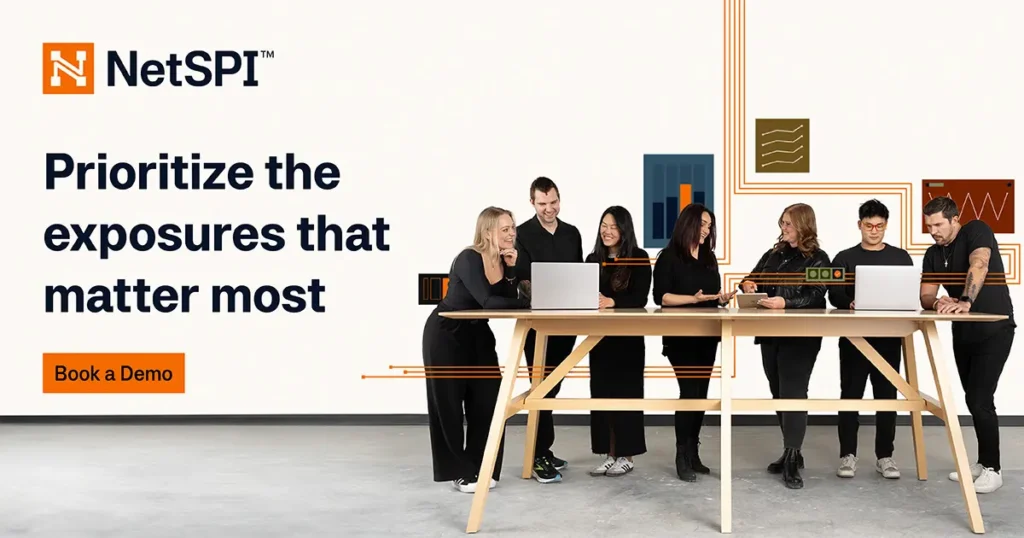
The Strategic Value of Platformization for Proactive Security
Security leaders are dealing with tightening budgets while security risks that consistently challenge them continue to rapidly expand. Should they continue to persist with a collection of point products or step up to adopting a unified platform that not only addresses multiple use cases but offers force multipliers with advanced integration and context? The choice they make could have far-reaching impact not only on their budgets, but also on their ability to protect their assets.
A 2022 Gartner survey showed that 75% of organizations are pursuing consolidation of their security vendors. The top benefit is reducing the complexity of their security stack and improving their risk posture.
Unlocking NetSPI’s Platform Milestone
To meet the industry’s growing need for simplicity and effectiveness of security strategies, NetSPI consolidated the following key proactive security solutions on The NetSPI Platform:
- Attack surface management (ASM)
- Breach and attack simulation (BAS)
- Penetration testing as a service (PTaaS)
Our customers now have the option to access all these solutions from a single user interface, bringing a new level of enrichment, highly actionable results, and real-time collaboration with The NetSPI Agents as they work toward proactive security.
Benefits of Security Platform Consolidation
The top benefits of security platformization are reducing complexity and improving risk posture. Our decision to consolidate ASM, BAS, and PTaaS on The NetSPI Platform brings a few key benefits to our customers:
- Single Source of Truth: Since all modules on The NetSPI Platform work on a unified common asset model, customers can see all assets and vulnerabilities, or findings, in one place.
- Enhanced Visibility and Intelligence: You can go beyond a pentest with BAS and ASM working in tandem.
- Comprehensive Data: You’ll acquire deeper insights into vulnerabilities, risk prioritization, and impact of exploitation.
- Cross Module Use Cases: You’ll have access to attack paths and narratives, robust asset inventory, expanded integrations, and workflow automation that span multiple modules.
Our goal with this update is to provide a more holistic and unified view of an organization’s proactive security readiness.

Continuous Threat Exposure Management (CTEM) as the Framework for Proactive Security
Another trend sparking conversations today is the increased attention on CTEM as an effective framework for continuous security testing.
CTEM is a proactive security framework that focuses on identifying, assessing, and mitigating risks within an organization’s digital environment.
Gartner’s Top Strategic Technology Trends for 2024 says, “by 2026, organizations prioritizing their security investments, based on a CTEM program, will realize a two-third reduction in breaches.”
The five phases of CTEM are: scoping, discovery, prioritization, validation, and mobilization. It’s gaining traction as a framework to help teams shift from a point-in-time, reactive approach to security to a continuous, preventative one.
By combining proactive security solutions such as BAS, ASM and PTaaS, security teams can tailor their journey toward CTEM – all using The NetSPI Platform.

Looking to the Future: What’s Next for NetSPI’s Platform
In the coming months, we’ll expand the the NetSPI Platform’s solutions and functionality to enhance its value in a proactive security journey.
In the near term, customers will have access to cyber asset attack surface management (CAASM) on NetSPI’s Platform, offering a unified view of their assets – both internal- and external-facing, along with their vulnerabilities and security control coverage. With this expansion, we’ll offer an enhanced and comprehensive view of exposure, and associated risk.
The NetSPI Platform is a monumental step forward in preparing the industry for effective CTEM programs. We can’t wait for you to see the expanded capabilities for yourself. Request a demo to consult with our team on your path forward.
Authors:
Explore more blog posts

Exploiting Second Order SQL Injection with Stored Procedures
Learn how to detect and exploit second-order SQL injection vulnerabilities using Out-of-Band (OOB) techniques, including leveraging DNS requests for data extraction.

CTEM Defined: The Fundamentals of Continuous Threat Exposure Management
Learn how continuous threat exposure management (CTEM) boosts cybersecurity with proactive strategies to assess, manage, and reduce risks.

Balancing Security and Usability of Large Language Models: An LLM Benchmarking Framework
Explore the integration of Large Language Models (LLMs) in critical systems and the balance between security and usability with a new LLM benchmarking framework.


